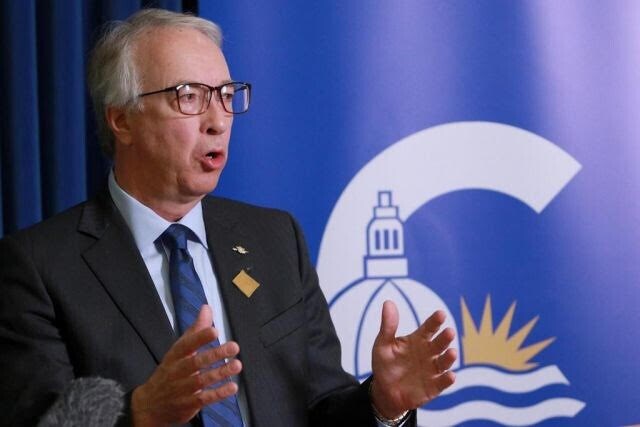We are less than three months away from a scheduled provincial election in British Columbia. The illusions of an easy victory by the governing BC New Democratic Party (NDP) – assisted by a split of the centre-right vote between the re-branded BC United and the upstart Conservative Party of BC – are effectively gone. The summer has heralded a close race, with different challenges for all political organizations.
In late July, the BC NDP holds a three-point edge over the BC Conservatives among decided voters across the province (41 per cent to 38 per cent). The BC Green Party is a distant third with 10 per cent, followed by BC United with nine per cent.
Since June, the Conservatives have gained five points, while the Greens – following the announcement of incumbent legislator Adam Olsen’s retirement – are down by the same margin. BC United is in single digits for the first time, while the New Democrats have gained a point.
The BC NDP remains ahead in Metro Vancouver (44 per cent) and Vancouver Island (43 per cent). With the BC Conservatives solidifying their support in northern B.C. (57 per cent) and the Fraser Valley (47 per cent), southern B.C. emerges as a key battleground. Right now, the two parties are practically tied: the New Democrats at 40 per cent and the Conservatives at 38 per cent.
This region is a perfect example of how much a party’s fortunes can change. In 2020, the BC Liberals secured 44 per cent of the vote in the 16 southern B.C. constituencies, winning 12 of them. In our July survey, only 10 per cent of decided voters in southern B.C. are currently willing to vote for BC United candidates. This is a different situation from the one we see in northern B.C., where voter transformation from 2020 BC Liberal to 2024 BC Conservative has been unmistakeable.
The approval rating for BC United Leader Kevin Falcon dropped to 29 per cent (down three points), matching his previous low registered in September 2023. The numbers also fell for BC NDP Leader and Premier David Eby (48 per cent, down five points) and BC Greens Leader Sonia Furstenau (35 per cent, down four points). Despite the climb for his party on voting intention, the approval rating for BC Conservative Leader John Rustad stands at 39 per cent (down one point).
The vote consideration question shows no momentum for any party, suggesting that there has been little on policy or candidate announcements to move electors. The New Democrats are still ahead on this indicator (51 per cent, down three points), followed by the BC Conservatives (45 per cent, down one point), the BC Greens (36 per cent, down two points) and BC United (32 per cent, down two points).
Housing, homelessness and poverty is the most important issue facing the province for 42 per cent of British Columbians – the highest proportion ever recorded in our surveys. Health care is still second at 21 per cent, followed by the economy and jobs at 14 per cent, the environment at six per cent, and crime and public safety at five per cent.
In the eve of the previous provincial election in late October 2020, when COVID-19 was one of our main preoccupations, only 23 per cent of British Columbians saw housing, homelessness and poverty as the main challenge to be tackled. Now it is the most important issue in southern B.C. (45 per cent), the Fraser Valley (also 45 per cent), Metro Vancouver (44 per cent) and Vancouver Island (38 per cent).
Despite the significant lead the BC NDP has in Metro Vancouver and Vancouver Island, the party should be worried about the current state of the race. Eby’s approval is lower than it has ever been since he became premier, housing remains a significant concern and the party’s weakest age bracket is the youngest one. In previous elections, the New Democrats could count on British Columbians aged 18-34, as long as they were motivated enough to cast a ballot. This year, they are more likely to be pondering a different option.
While the BC Conservatives continue to rise on voting intention, they run into a significant generational gap. The approval rating for Rustad stands at 36 per cent with British Columbians aged 35-54 and aged 55 and over. Eby does better in each of these groups (43 per cent and 54 per cent respectively). Older voters tend to participate more in democratic processes than their younger counterparts. British Columbians aged 55 and over, who were staunchly supportive of the BC Liberals in this century’s pre-pandemic elections, are not yet looking at Rustad as their main option.
The BC Greens built a brand in Vancouver Island with well-known candidates, ultimately becoming a “third way” for voters tired of both the BC NDP and the BC Liberals. In this election, the BC Conservatives are clearly capturing disenchanted British Columbians. A data point exemplifies this perfectly: BC Green voters in 2020 are more likely to be backing the BC Conservatives in 2024 (21 per cent) than the BC NDP (11 per cent).
In single digits across the province, with the lowest-rated party leader and no longer a factor in their usual stronghold in the southern part of the province, BC United runs the risk of becoming irrelevant. The party’s 12 incumbent lawmakers may find a way to connect with the constituents they currently represent, but just what type of influence they will have in the next legislature – if they are elected – is a mystery.
Mario Canseco is president of Research Co.
Results are based on an online study conducted from July 23 to July 25, 2024, among 801 adults in British Columbia. The data has been statistically weighted according to Canadian census figures for age, gender and region in British Columbia. The margin of error—which measures sample variability—is +/- 3.5 percentage points, nineteen times out of 20.




